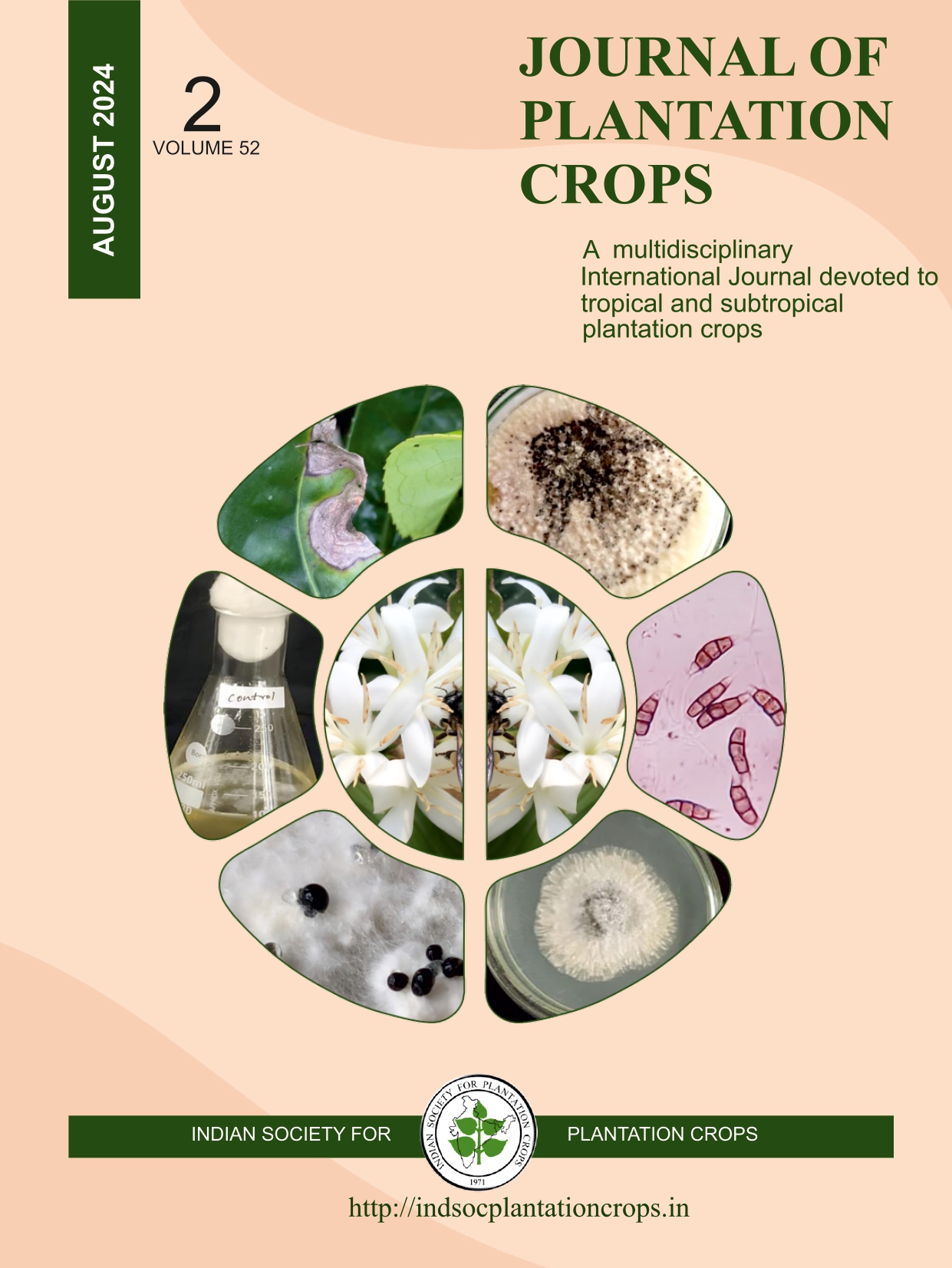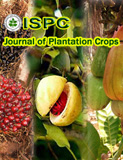Comparative study of different arecanut-based cropping system models under sub Himalayan terai region
DOI:
https://doi.org/10.25081/jpc.2024.v52.i2.9622Abstract
There is ample scope for intercropping in arecanut plantations for better utilisation of natural resources like land and sunlight. An experiment was conducted at CPCRI, Research Centre, Mohitnagar, with different crop combinations to establish a model for increased system productivity and better livelihood. Five arecanut-based cropping system models comprising different crop combinations were compared with the monocropping system of arecanut. The total system productivity ranged from 31.5 q/ha (control) to 131.1 q/ha across different models. Model II (arecanut + black pepper + acid lime + turmeric) emerged as the most productive, demonstrating superior total system productivity. This model resulted in notable increase in arecanut challi yield. Particularly noteworthy was the contribution of black pepper, which accounted for over 50% of the total system productivity. It is concluded that the arecanut-based cropping system is more advantageous than the monocropping of arecanut. Arecanut based cropping system has the potential to double the farmers’s income as the total system productivity has increased many folds over control. Among the different models studied, Model II with a crop combination of arecanut, black pepper, acid lime, and turmeric performed better withhigher returns. It is also suggested to the arecanut growers to adopt arecanut-based cropping system for their better livelihood.
Downloads
References
Abraham, K. J. 1974. Intercropping in arecanut helps to build up farmer’s economy. Arecanut and Spices Bulletin. 5: 73-75.
Das, P. K. 1990. Training module on Economics Aspects of Coconut Cultivation. In: Training on Coconut Production Technology, CPCRI, Kasaragod, pp.48-51.
Krishnamurthy, K. S.; Ankegowda, S. J; Srinivasan, V and Hamza, S. 2013. Influence of carbohydrates, mineral nutrients and plant hormones in alternate bearining of black pepper (Piper nigrum L.). American Journal of Plant Sciences, 2013, 4, 1960-1967 http://dx.doi.org/10.4236/ajps.2013.410243 Published Online October 2013 (http://www.scirp.org/journal/ajps)
Muralidharan, A. 1980. Bio mass productivity, plant interactions and economics of intercropping in arecanut. PhD Thesis, University of Agricultural Sciences, Bangalore, pp. 271.
Naagarajan, R. and Meenakshi, R. 2016. Analysis of Areca nut production and export in India. International Journal of Applied Social Science. Volume 3 (3& 4), March & April (2016) : 67-81.
Panse, V. G. and Sukhatme, P. V. 1995. Statistical Methods for agricultural Workers. IASRI, New Delhi, 1-346.
Sujatha S, Baht Ravi, Balasimha D and Kannan C (2006). Crop diversification in arecanut plantation through intercropping of medicinal and aromatic plants. Journal of Plantation Crops. 34(3); 318-322.
Sujatha, S. Bhat, Ravi, Kannan, C. and Balasimha, D. 20111. Impact of intercropping of medicinal and aromatic plants with organic farming approach on resource use efficiency in arecanut (Areca catechu L.) plantation in India. Industrial Crops and Products. 33(1): 78-83
World Area and Production--https://www.indexbox.io/blog/which-country-produces-the-most-areca-nuts-in-the-world/
Published
How to Cite
Issue
Section
Copyright (c) 2025 Journal of Plantation Crops

This work is licensed under a Creative Commons Attribution 4.0 International License.








 .
.